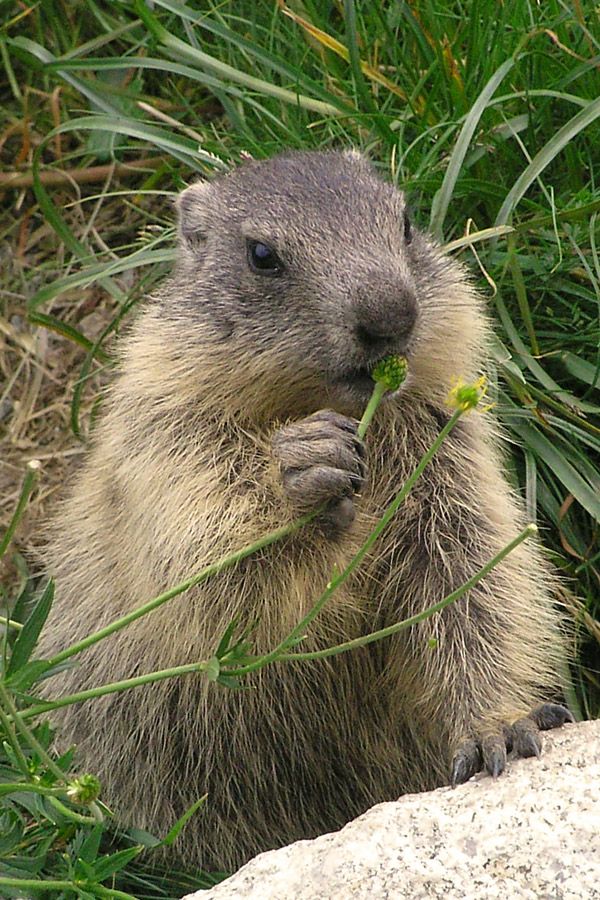
Alpine Marmot (Marmota marmota)
The Alpine Marmot (Marmota marmota) is a species of marmot found in mountainous areas of central and southern Europe. Alpine marmots live at heights between 800 and 3,200 metres in the Alps, Carpathians, Tatras, the Pyrenees and Northern Apennines in Italy. They are excellent diggers, able to penetrate soil that even a pickaxe would have difficulty with, and spend up to nine months per year in hibernation.
Alpine marmots prefer alpine meadows and high-altitude pastures and colonies, where they live in deep burrow systems situated in alluvial soil or rocky areas.
As the summer begins to end, alpine marmots will gather old stems in their burrows in order to serve as bedding for their impending hibernation, which can start as early as October. They seal the burrow with a combination of earth and their own faeces. Once winter arrives, alpine marmots will huddle next to each other and begin hibernation, a process which lowers their heart rate to five beats per minute and breathing to 1–3 breaths per minute, which uses up their stored fat supplies as slowly as possible. Body temperature will drop to almost the same as the air around them, although heart rate and breathing will speed up if the environment approaches freezing point.
Source: en.wikipedia.org/wiki/Alpine_marmot - 04.07.2011
Hibernation - Extreme Survival Strategy
In our zones there are many wild animals, which have to prepare themselves intensively for the cold season. The migratory birds, living with us, are only concerned indirectly, because they avoid the winter by flying south. Most of the other animals are unable to do this, but they got other good solutions to deal with freezing temperatures and lack of food.
Some of them get their so-called winter coat, which is so thick, that it protects them fairly well from the cold, others retire into caves or holes in tree trunks to hibernate. Because they are nearly or completely unable to move, they save energy and hardly need food. Many of the little mammals sleep through the winter completely and do not come out of their hideout until the temperatures have rise again, but some of the bigger ones use the strategy of winter rest, which means, that they sometimes wake up and eat. Some insects, amphibians, and snakes fall into torpor, a condition that is in their case automatically brought about by certain temperatures, reducing biological activity even further than winter rest would.
Examples of animals practising hibernation are bats, hedgehogs and marmots. During hibernation both body temperature and rate of heart beat are reduced. In the state of hibernation the heart of a hedgehog for example beats only 5 times per minute instead 200 times and the quillet only breathes once or twice a minute instead of 50 times. But in between the animal sometimes changes its sleeping position and defecates and urinates. If hibernation is interrupted frequently it is life-threatening, because the animals lose energy and therefore need food that is not available in this season.
The only bird of which we know that it can hibernate is the American Common Poorwill.







